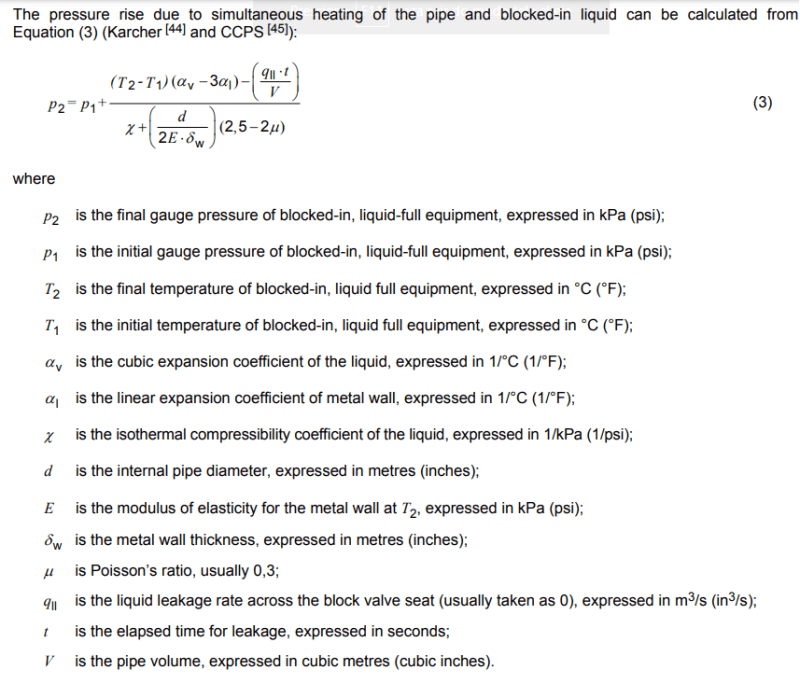Hi,
We are analysing the need for relief valves in a system completely filled with a blocked-in fluid with internal pressure rise due to thermal expansion resulted from heating by solar radiation.
By consulting CYRIL F. PARRY – RELIEF SYSTEMS HANDBOOK and API 521, we found general orientations regarding the maximum volume recommended without the need for relief valves, depending on how dangerous the fluid is (0.01 m³ for those considered high risk, and 100 m³ for those that do not represent risks).
However, we are looking for ways to find especific values of lenght (or volume), depending on the amount of pressure rising due to termal expansion of the liquid, but we cannot seem to find any.
Is there an equation that correlates ΔP suffered by the fluid and the L (or V) of the tube so we could express our conclusion with something as simples as "every L meters you will need to install a relief valve"? Which criteria of tube lenght per diameter (volume, m³) can we use to determine where the relief valves should be applied?
We are analysing the need for relief valves in a system completely filled with a blocked-in fluid with internal pressure rise due to thermal expansion resulted from heating by solar radiation.
By consulting CYRIL F. PARRY – RELIEF SYSTEMS HANDBOOK and API 521, we found general orientations regarding the maximum volume recommended without the need for relief valves, depending on how dangerous the fluid is (0.01 m³ for those considered high risk, and 100 m³ for those that do not represent risks).
However, we are looking for ways to find especific values of lenght (or volume), depending on the amount of pressure rising due to termal expansion of the liquid, but we cannot seem to find any.
Is there an equation that correlates ΔP suffered by the fluid and the L (or V) of the tube so we could express our conclusion with something as simples as "every L meters you will need to install a relief valve"? Which criteria of tube lenght per diameter (volume, m³) can we use to determine where the relief valves should be applied?


